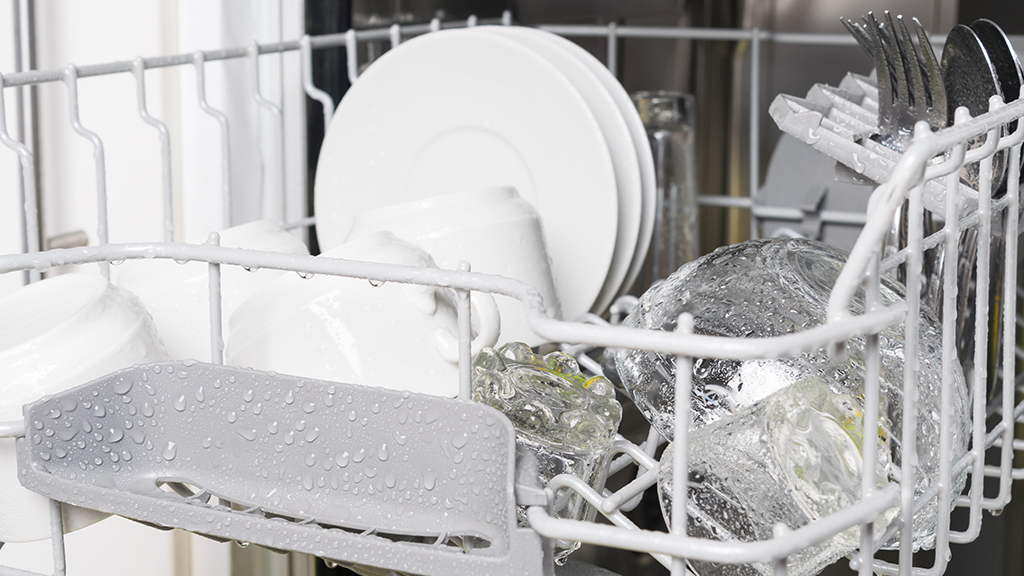If you notice that the hum of your refrigerator has been going on for much longer than it used to, there may be a problem. Don't worry, though. Asurion Experts are trained and certified to help repair all major appliances from all major brands. Here's their breakdown of how long your refrigerator should be running and how to fix a fridge that's running for far too long.
My refrigerator runs constantly. How can I fix it?
Since refrigerators often go through cooling cycles, it's not unusual to hear yours running pretty often throughout the day. But if your fridge never seems to turn off, you might be wondering, "How often should a refrigerator run?," or, "Is it normal for my refrigerator to be running all the time?"
Your fridge should run from around 35% of the day to around 85% of the day. A refrigerator that gets opened more frequently has to operate more often to lower the temperature of warmer items, so this amount varies.
However, no fridge should run all the time. Try following these steps to diagnose the problem.
Jump-start the defrost timer
This component determines when a defrost cycle begins, so if this timer isn't functioning properly, the compressor may not cycle when it should. Most default timers are located in the bottom, back, or in the main body of your fridge as part of the control panel.
To jump-start the defrost timer, first find it and test it with a multimeter to determine whether the motor is working properly. Not sure how? Check out our guide to using a multimeter. If it's a mechanical timer, insert a slotted, or flathead, screwdriver blade into the slot at the middle of the timer. Use this to turn the timer and see if that activates the heater switch.
If the heater doesn't engage or if it doesn't work on its own after your attempt to start it, you'll likely need to replace the timer.

No one wants to deal with a broken appliance
With Asurion Appliance+, you don’t have to. Our hassle-free plans cover all your eligible home appliances—no matter the brand or where you bought them.
Check the defrost heater tube
The defrost heater tube is generally located at the back of the freezer compartment, under the evaporator cover. To check it, just unplug the fridge, find the heater tube or tubes, then test it with a multimeter to see if it's working properly.
Test the defrost termination thermostat
This component is usually wired along with the defrost cycle element. To test it, unplug your refrigerator, find the defrost thermostat, and remove it. Then, using a multimeter, test the thermostat wire. If the thermostat is cold, the multimeter reading should be 0. If it's from 40 to 90 degrees Fahrenheit, the reading should be infinity. If you get different results, your defrost termination thermostat is malfunctioning and you'll need to replace it.
Inspect the door gaskets
Door gaskets are responsible for keeping cold air in and warm air out. If they're faulty, your refrigerator may have to work overtime. You may be able to tell that the gaskets aren't working properly by looking along the edges of the doors for moisture. However, the best test is to put a piece of paper in the seal. After closing the door, try to slide the paper out. It should not do so freely. If it does, you need new door gaskets.
Check the condenser fan motor
When the condenser doesn't get rid of the heat in your fridge appropriately, your refrigerator will need to work harder to keep your appliance cold. If your refrigerator has a freezer on the bottom, and you've noticed that the temperature is higher than it should be between the vegetable crisper and the freezer, that could indicate condenser fan motor issues.
Disconnect your refrigerator from the power source and remove the rear access panel to find the condenser fan motor near the compressor. Check the fan to see if it spins appropriately or has signs of wear. If it looks worn or doesn't spin, it's time to replace it.
Dirty condenser coils could also be part of your problem. Remove the underplate or back plate from your refrigerator and use a vacuum to remove excess dust and dirt from the condenser coils. Do this at least twice a year—more often if you have pets who shed.
Adjust the evaporator fan motor
If the evaporator fan doesn't work properly, other components have to work harder to keep your refrigerator at the right temperature. To fix this common issue, unplug your refrigerator and find the evaporator fan motor inside the freezer compartment.
If there's a lot of ice around the motor, allow your freezer to defrost. This may solve the problem. If it doesn't, try to turn the motor shaft; it should move freely. If there is resistance, look inside the motor to see if there are any objects lodged inside. If the shaft still doesn't move, even after you've checked for any objects lodged inside, or it displays signs of damage, you may need to replace it.
Find out if the sealed system is damaged
This system includes your refrigerator's suction tube, metering device evaporator, compressor, and condenser. Only a qualifie
d refrigerator technician should check the sealed system, since it requires a live voltage test—but if you still can't find what's wrong with your refrigerator, this system may be the culprit.
Reliable protection for the major appliances you rely on
When your appliances don't work, we do. With Asurion Appliance+®, get hassle-free coverage for your current appliances and future purchases—no matter the brand or where you bought them—plus 24/7 troubleshooting support. Learn more about Asurion Appliance+™ coverage and how you can get total peace of mind protection.





